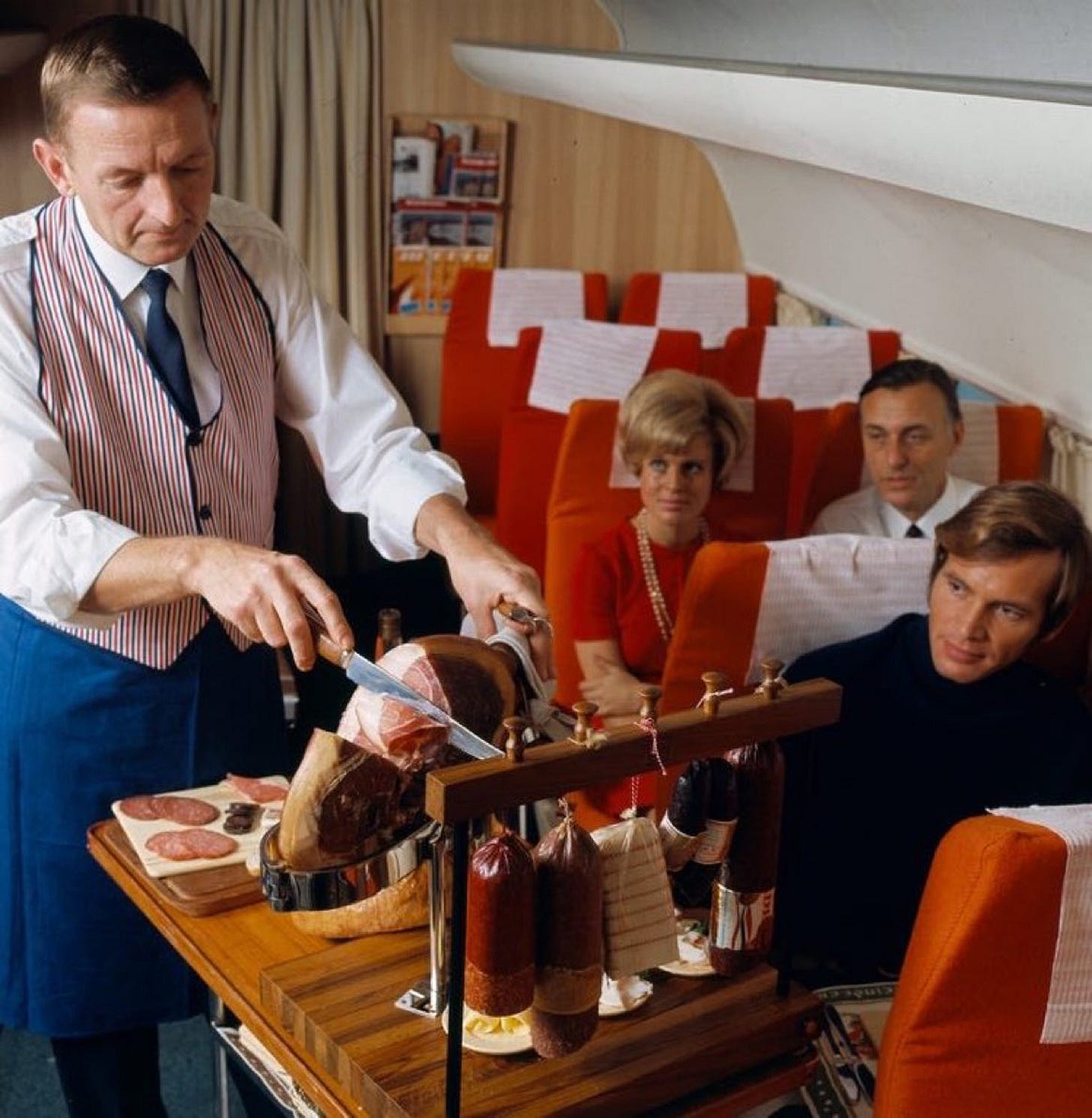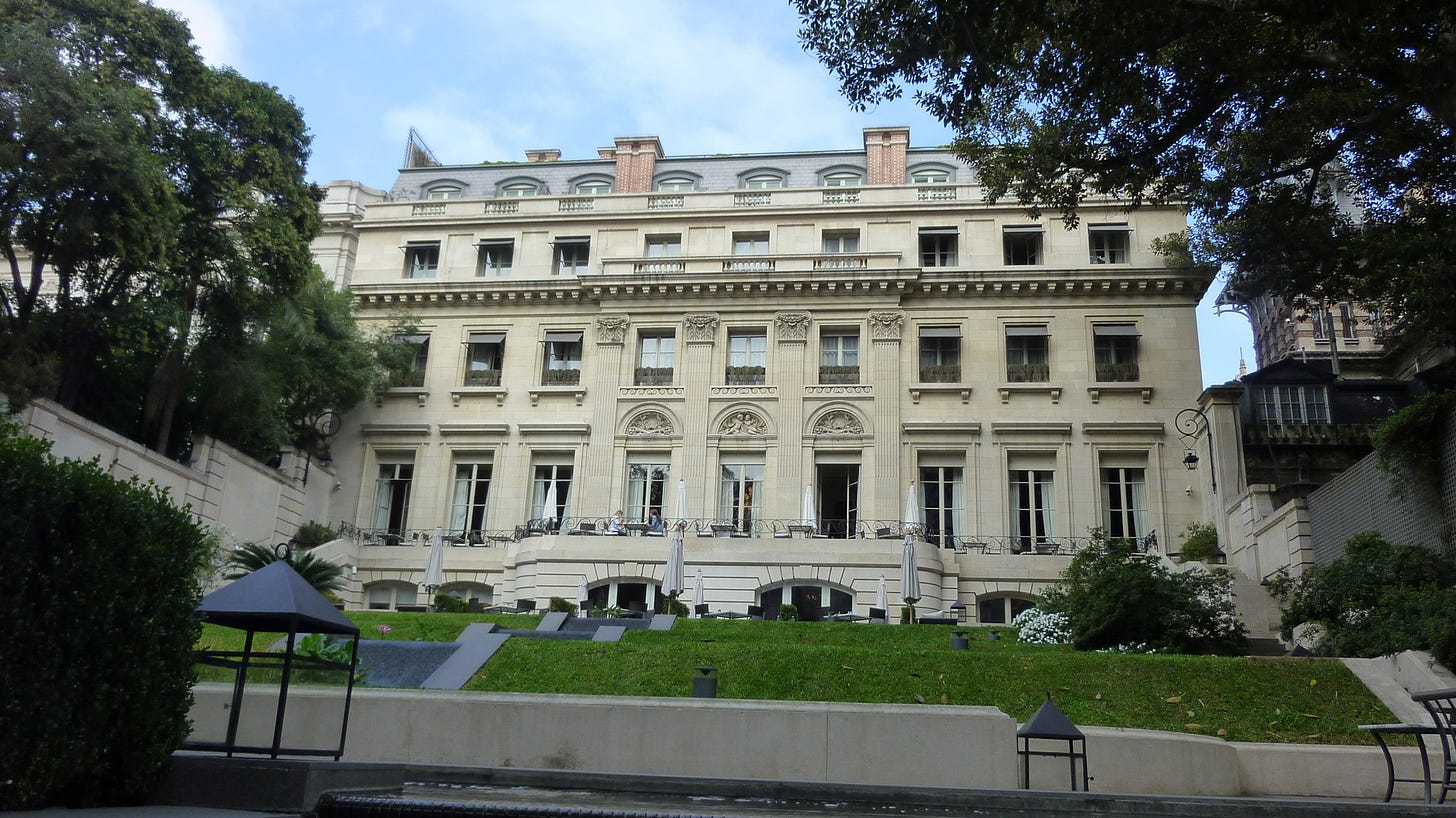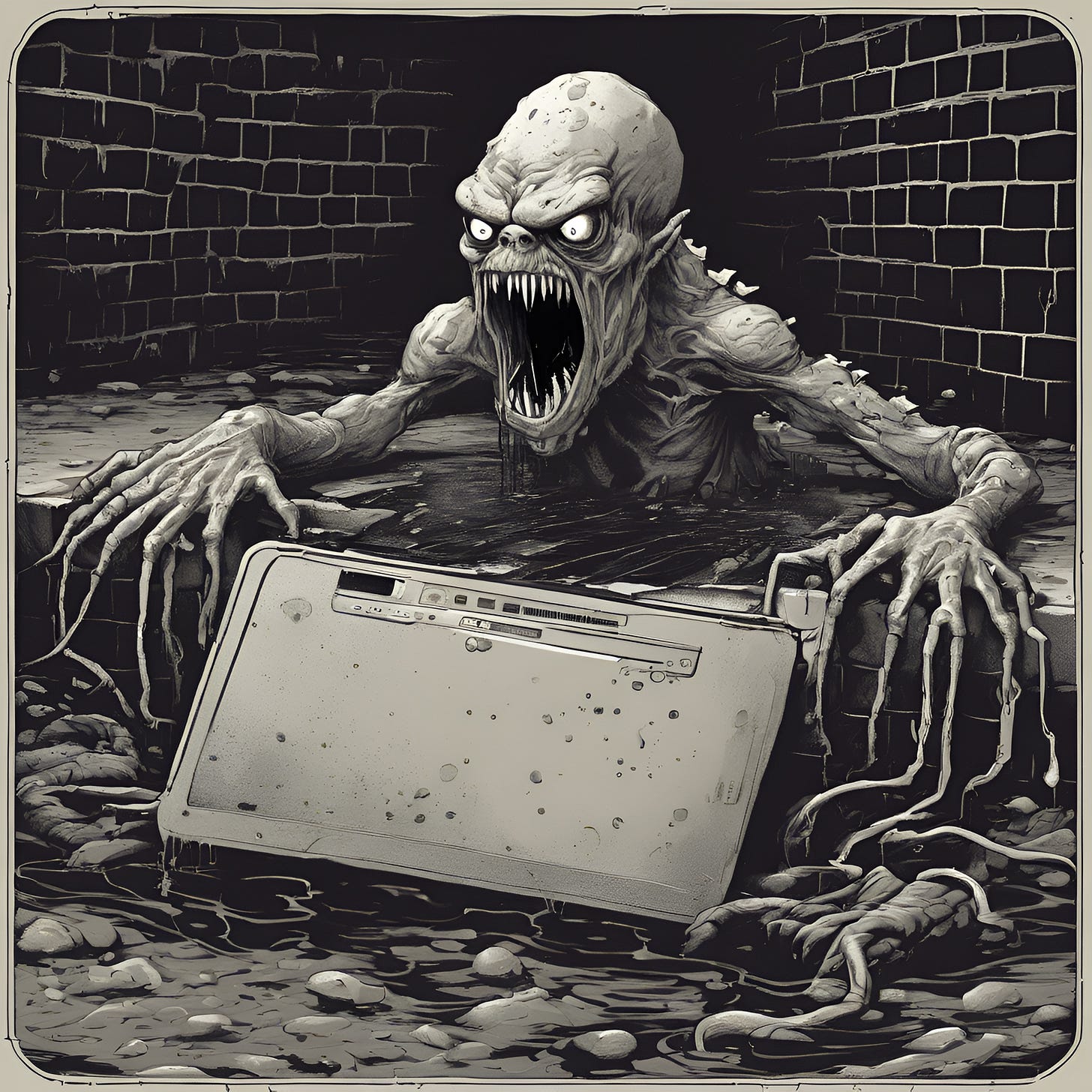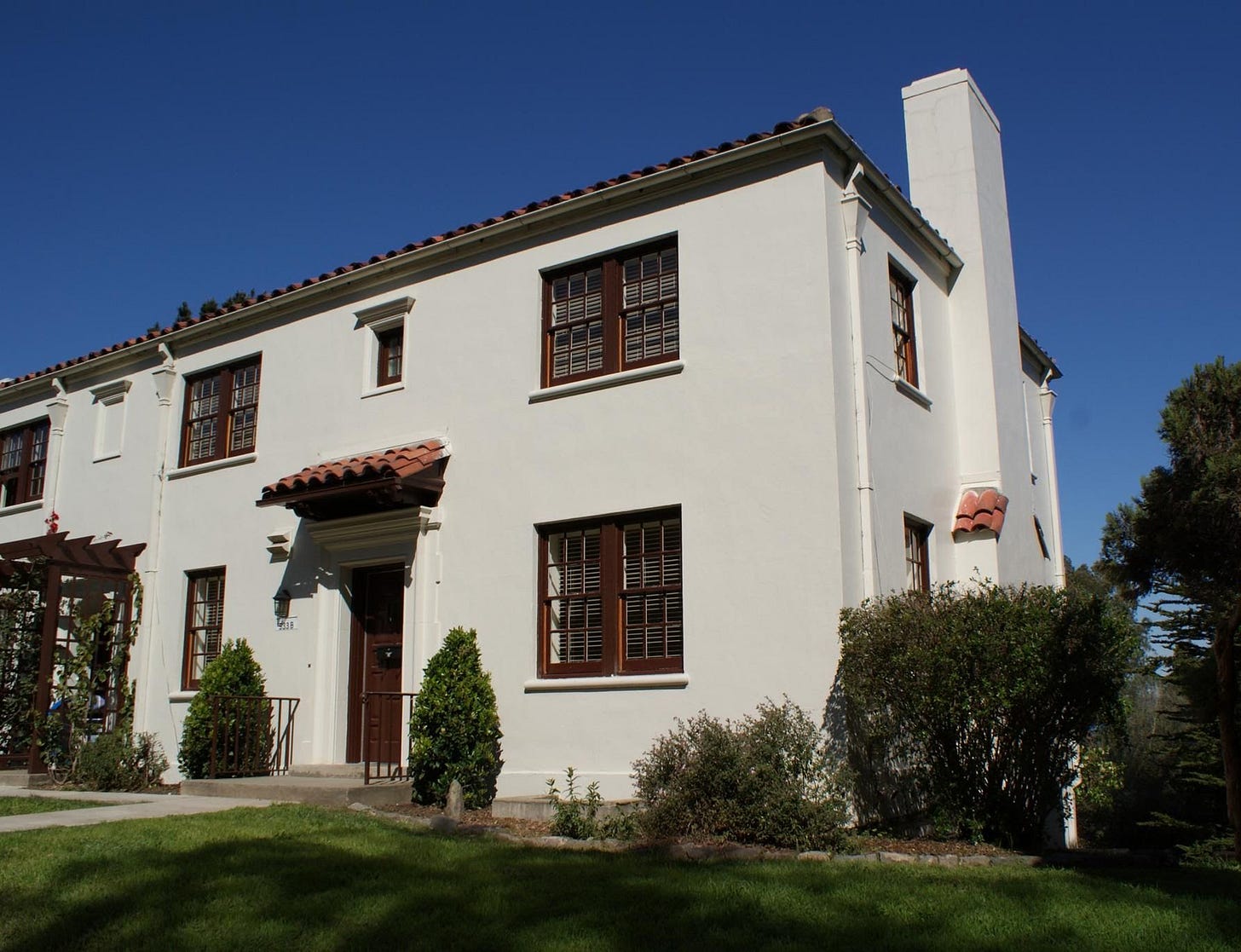TODAY'S RAMBLINGS
7 Minute Read
Happy Friday, and some housekeeping. Tomorrow, Julie and I depart for a 3-week trip that will take us to Lake Garda, The Dolomites, and Rome.
While I’m away, I’ll mostly be doing a greatest hits kind of thing here (with a surprise or two thrown in) - Mondays and Wednesdays will be repeats of some personal favorites, while on Friday, I will publish the remaining chapters of Maybe It Was Destiny.
So yes, the end is in sight, and here is the tenth installment.
Preface and Chapter 1
Chapter 2
Chapter 3
Chapter 4
Chapter 5
Chapter 6
Chapter 7
Chapter 8
Chapter 9
ROLLER COASTER, IN BUSINESS CLASS
This period, from 2006 through 2016, was a high-water mark in my personal and professional life; that must be obvious. I had pushed the proverbial rock up the hill: I had built a successful business from scratch. I had amazing customers who kept coming back for more and/or referred me to their friends and family.
But it was even better because of the way I had structured it, with no overhead, no employees, no office, and no inventory. I called my own shots, including turning away and/or firing customers that weren’t cool.
Combined with nary a hiccup in business, including during and after the 2008 Financial Crisis, it all meant a typical year was 9 months of grueling work and 3 months of some relatively outrageous vacations. We could afford all of that, plus put plenty into our retirement savings - something that proved to be quite important later.
But the travel we did is something in which my wife and I still take great pride. A lot of it, starting with that aforementioned Tuscany trip in 2006, was made drastically better by a decision I made early in the company’s days:
I didn’t get terms with wholesalers.
You know, where I’d get Sony TVs or Denon A/V receivers or Klipsch speakers for installs, and pay later. These were the companies like ProfitLine A/V, Electronic Stockroom, and AVAD I mentioned earlier.
But I paid upfront, instead, with a credit card, specifically a Citibank Shittybank American Airlines mileage card. I didn’t need terms - my clients always paid quickly and I had the cash flow anyhow, so this was a masterstroke.
With this card, I would not only profit from the hundreds of thousands of dollars my clients would spend over the years on electronics and everything else, but get hundreds of thousands of miles on American Airlines and its OneWorld partners at the same time.
And back then, the miles were still worth something. So during this period, we visited:
Rome, Florence, and Tuscany (2006)
Barcelona, Formentera, Lisbon, The Douro Valley, and Porto (2008)
Paris, The Dolomites, and Rome (2010)
Buenos Aires, Mendoza, Santiago, Casablanca Valley, and Valparaiso (2012)
London, Amsterdam, and The Cotswolds (2013)
Rome, Tuscany, The Dolomites, and Munich (2015)
Dublin, Wales, Scotland, and London (2016)
With free long-haul flights from SFO each time, in at least business class.
And as you’d guess, we didn’t exactly skimp upon arrival - these were my prime Diamond Man years, and the hotels reflected it. For example, this is the Palacio Duhau - A.K.A. The Park Hyatt Buenos Aires, where we stayed in 2012.
But that's not the cool part.
One day, I was doing some work at Nick Pritzker's Hacienda compound, one of his two completely insane properties in Nicasio. Nick was there, and I always took an opportunity to chat with him when I could.
"Nick, Julie and I are staying at the fancy Hyatt in Buenos Aires in a couple of months - I assume you've been there and do you know anything about it?"
I am glad I asked. Because he treated me to a 15 minute recap of his negotiation with The Mafia, who happened to own the building when Nick's Hyatt sought to make it a hotel in the early 2000s.
"Great people to do business with," Nick told me.As the cover says, my dreams had come true and they kept coming true for several more years.
I share this to brag, of course, and to emphasize what Casa Integration was doing for me.
But also, to contrast with what it was doing to me.
I HATED THIS FOR 16 YEARS
Yes, it was luxe but yes, the work was often gruesome. Weekends. Those damned attics and crawlspaces. The sheer physicality in general. Driving all over the Bay Area and beyond, before sunrise and after dark.
But the worst was dealing with what I came to call the technology monster crawling out of the sewer. This is about right.
It’s why the panic attacks continued. But why did HDMI have to suck so very fucking much?
In other writings, I've described the panic attacks with which I've been plagued for most of my adult life. Sadly, the quasi-raging success I was having with Casa Integration did nothing to tame them.
If anything, they were worse now that I'd made it, as I took what I was doing incredibly seriously. Being anxiety-prone in general didn't help, either.
The freak-outs came in 3 unpleasant flavors:
1. Before major, soup-to-nuts installs, where I'd toss and turn all night in bed imagining what could go wrong, while at the same time sweating like Sinatra
2. On the jobsite, at the start of almost every install, big or small, I'd be good for at least one gusher - just because
3. When the technology didn't work and I had no answers as to whyIt's the last one that eventually finished me off, in terms of Casa Integration.
We'll get there, but for now, imagine having worked on a particular project for months, perhaps even years. You sold the work, did the design and engineering to top industry standards, wired the house, ordered the dozens (or even hundreds) of components necessary, brought it all onsite, and did days of work doing the installation.
Everything is ready to go, except you don't ever know if arguably the most important aspect of the project would work. Specifically, could I get a picture on the TVs I installed in a given home?
My first few years in the business were blissfully analog. But now, the analog-to-digital transition with TVs was picking up speed. A major part of that was how one would now connect things like a cable TV box or DVD player to a television. Whereas previously those connections were analog, they would now and forever be digital.
But what the industry cooked up for this, the High-Definition Multimedia Interface, or HDMI, was the devil's ugly stepchild. And one that walked with a limp and had a bad haircut.
With the advent at around the same time of high-definition content, the movie studios and TV networks insisted on a connection that would prevent the copying of their master-quality material. Remember - this was right after Napster had decimated the music industry, and the TV and movie industry didn't want the same demise.
Since HDMI was digital, one would think that would be easy. One would be wrong and so fucking wrong it's funny.
Except it's not, because in a professional life of 40 years in technology, I had never experienced a technology so vital yet so royally awful. The problem was the copy protection that was (and is) an integral part of the whole thing. I can describe it like this:
If the dog sneezed, the picture on an otherwise perfect flat-screen TV installation would flicker or disappear completely.
This began in the late aughts and would take years before it was resolved - mostly. Fully explaining why this happened is boring, but the HDMI specification called for an exact amount of voltage to arrive at the TV. Anything else was interpreted as an invalid connection request, potentially to copy something. This is the (dreaded) HDMI handshake process.
If that exact amount of voltage (we're talking tiny, tiny amounts of electricity) was not present, no picture. For a typical consumer in a typical home with a typical 3-foot HDMI cable, it was fine. But I will repeat that this sector of the business was and is called custom installation, not typical installation.
For example, back then it was particularly de rigueur to locate all of the electronics (like cable boxes, amplifiers, AppleTV boxes, receivers, etc.) for the home in a central location (like the basement or a closet), in an equipment rack. That way, there'd be zero clutter in the living space, but with the same capabilities. I bet I put in 50 racks for that purpose over the years.
But that meant you had to distribute HDMI over long distances, and voltages could and did fluctuate. Which could and did fuck up several years of my life.
It took a while for this to sort itself out, and perhaps you can imagine how . . . frustrating it was in the interim.
It was another referral from Randy Clough, but the ante had been upped in two ways. First, it was a business partner of his. Second, his partner leased a home in The Presidio, a unique urban National Park in San Francisco. That mattered because these homes, while historic and left untouched on the outside, were rewired and replumbed to current standards.
"Randy sings your praises constantly," Randy's partner Mark said to me, as he gave me a tour of his 4 BR duplex on Simonds Loop. The house was stunning.
These were the homes of the captains and majors serving the 20th-century cause from this former US Army base, but Mark and his wife Catherine had nailed its modern incarnation.
In 2011 and to this day, these rent for something like $10,000 or more a month. They were exactly the thing a Master of The Universe wanting to simplify was looking for. Now he just needed pro-grade WiFi and a slick install of tech to complete it.
This was not Mark's home, but it might as well have been. The house was old and gorgeous, had views of San Francisco Bay, and most importantly to me, had brand-new coax and category 6 wiring from each room to a central location in the basement. It was ideal for what he wanted: cable TV service and AppleTVs for each of the 5 televisions Mark requested. I'd put all of that in a nice rack downstairs and the whole thing would be seamless and uncluttered upstairs. Perfect.
And the new-fangled, if proprietary, HDMI over coax adapters seemed ideal. From a leading vendor, of course they'll work in this simple application, with top-flight wiring. Right? The only good memory I have of this installation was listening to a local morning sports talk radio show, and hearing our friends’ names be drawn for a contest. Hunter and Fi Deuce had won a 5-night all-expenses-paid trip to the Four Seasons Maui.
I jumped straight in the air with joy for my friends.
But it wasn’t 30 minutes later I was standing in a pool of sweat instead, staring at the TV’s picture in the MBR. It was flashing the AppleTV’s home screen on and off. Every TV in the home was doing this.
"I'm fine starting over," Mark said.
It was the first time I couldn't make my design function properly. Most of the gear went upstairs, at the TVs, and not in the basement equipment rack.
Some money went backwards, too. Tail between my legs does not begin to describe it, and these tech problems were not limited to Mark's home in The Presidio.
I was learning, year after year, that the engineering and build quality of the products and services upon which I relied so heavily was getting worse, not better.
Denon AV receiver failures, control system RF madness, dodgy Internet from Comcast, and any of a range of HDMI problems: All were ready to crawl out of the sewer, and often did.
It was making me a bit crazy at times.I believe I came as close to a nervous breakdown that day as I have before or since. I completely lost it in my car, on the telephone. But it wasn’t the humiliation. It wasn’t the failure. It wasn’t screwing up the install of my most important customer’s business partner. And the $2,000 I had to kick back wasn’t it, either.
No, I broke down when the vendor called me that very same day to ask me how I was liking their new HDMI over coax product.
I bet the rep wishes they had missed me that day.
Next: WHY I DIDN’T GIVE UP (UNTIL I DID)
FROM THE UNWASHED MASSES
Thank you for reading this newsletter.
KLUF
It is indeed a very thin line between love and hate. Here are The Pretenders and the Killer Learning to Crawl.











